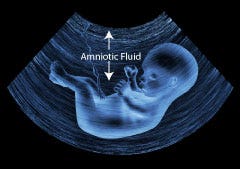
CleanAmp® dNTPs Aid in Detection of Intra-amniotic Infections
October 2015
Japanese researchers have developed a novel PCR assay for the detection of Ureaplasma, Mycoplasma and other bacteria and fungi in amniotic fluid samples (PLOS). Infection by these microorganisms can lead to the onset of preterm labor and perinatal morbidity. Additionally, infection of the infant in utero increases the risk of sepsis, pneumonia, bacteremia, and meningitis. Though total incidence of intra-amniotic infection (IAI) is unknown, it is estimated to occur in up to 40% of preterm labor cases <27 gestational weeks. Rapid detection and treatment is paramount for reducing the effects of IAI but conventional methods are lacking.

Currently, the “gold standard” for detection of IAI involves microbial cultures. This method is not ideal because it can take days to culture and many strains are difficult to cultivate. Furthermore, the development of reliable PCR methods have been hindered by bacterial DNA contamination from commercial thermostable DNA polymerases that interact with the universal bacteria primers. Ueno et al. circumvent this problem through the clever use of a eukaryotic-derived DNA polymerase coupled with TriLink CleanAmp dNTPs (Figure 1). CleanAmp dNTPs are chemically modified to provide a specific, sensitive, and versatile hot start solution that can potentially be used with any polymerase.

Using 300 amniotic fluid samples, the researchers assessed their novel PCR method against the conventional culture method. They found that their method was up to 4 times more sensitive than the gold standard (Figure 2), likely due to the difficulty in culturing these strains. Rigorous controls suggest the results are unlikely to be false positives.
A second nested PCR step also allowed for the calculation of critical threshold values, which provides additional information to aid in the treatment decision. Futhermore, this bacteria-free PCR method can also diagnose the absence of bacteria. This allows distinction from non-bacterial infection in certain instances and can also help determine the best option for treatment.

The results of this study are both convincing and impressive. The current detection standards are lacking in sensitivity and speed of detection. Considering the prevalence and relative ease of treatment, these results are impactful and this method may have the potential to reduce perinatal morbidities due to IAI and ensure the full term delivery of healthy infants.
Featured TriLink Product: CleanAmp dNTP Mix. For more information on the entire line of TriLink CleanAmp products, contact us.
Have a question? Visit Ask An Expert.

